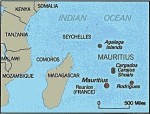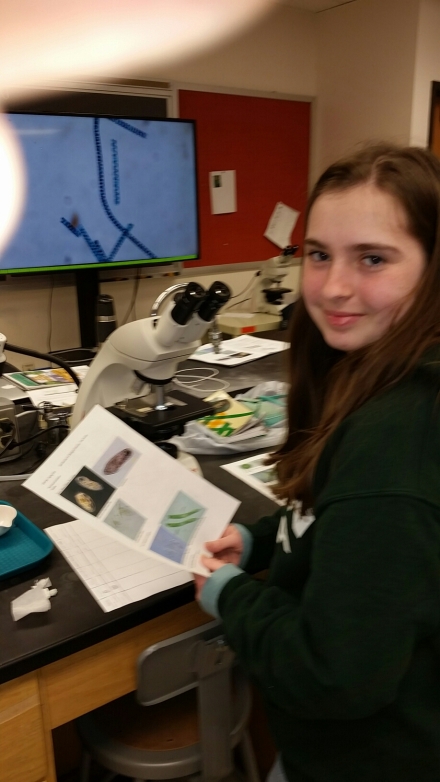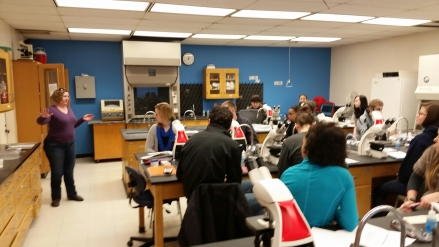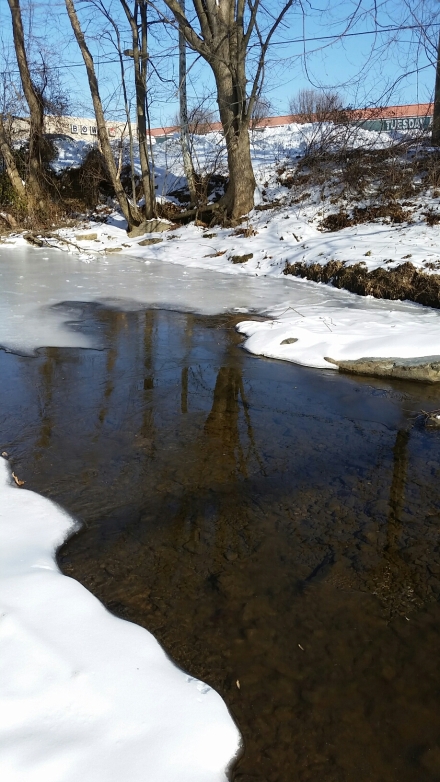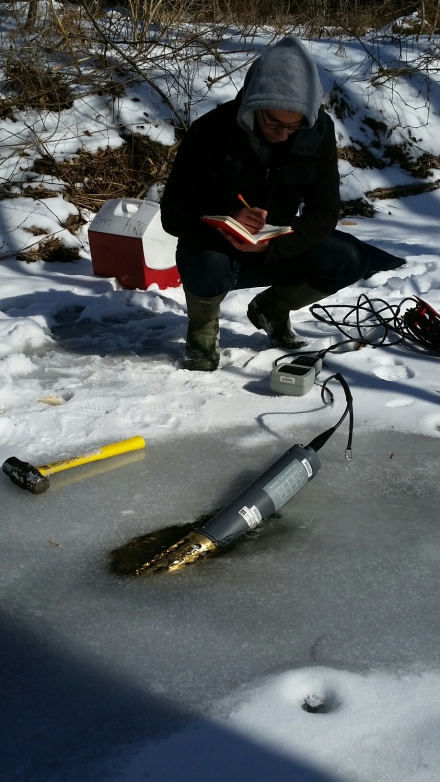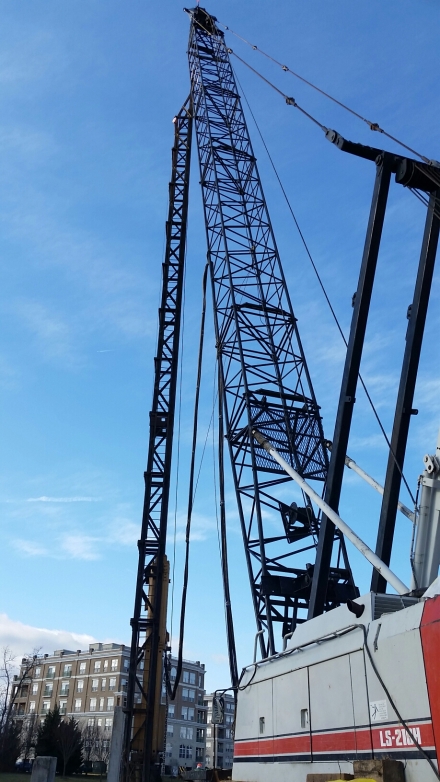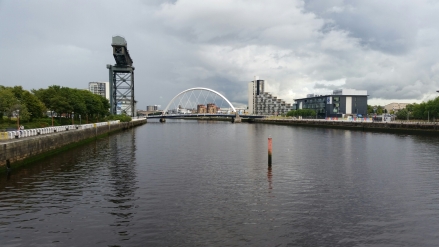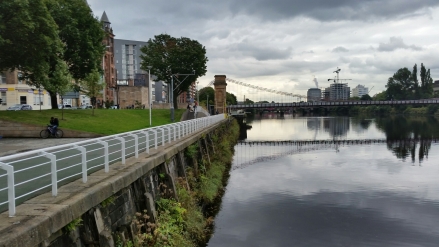By: Adrian Dahood
Hello De Mutsert Lab friends and followers! I have posted a couple of blogs here before. You likely already know that I have the coolest (pun intended) study area in the lab (in my humble opinion). I work in the Antarctic and I am about to go pay my study area a visit during the Antarctic winter.
My dissertation research involves creating a food web model of the marine ecosystems of the Western Antarctic Peninsula, specifically focusing on a region known as Statistical Area 48.1. Krill play a central role in the marine food web of the region. Therefore, it is rather important that the models adequately capture changes in biomass trends of krill and krill predators.

One of the key data sets I am using to build my models is NOAA’s Antarctic Marine Living Resources Division’s (learn more about NOAA AMLR here: https://swfsc.noaa.gov/aerd/) long-term monitoring data of krill and krill predators in Statistical Area 48.1. For the past two years NOAA has invited me to join the winter krill cruise and help them collect data to grow these data sets. I am about to head to sea with them for a third year.
I will be setting sail on the RVIB (Research Vessel Ice Breaker) Nathaniel B. Palmer. We will depart from Punta Arenas, in far southern Chile and remain at sea for about 27 days before returning to Punta Arenas.

While at sea, we will collect data 24 hours a day, seven days a week. Each person will work a 12 hour shift and then have 12 hours to rest (or in my case work on some writing projects!) During a shift, we will set the krill net four or five times.
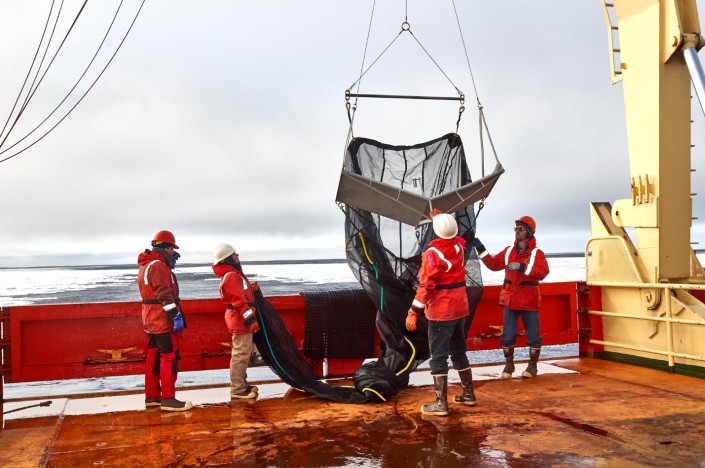
Once the net is retrieved, we sort and count the catch. In sets where few krill are caught, we can work through a haul in less than 90 minutes. Sets where we catch a lot of krill can take several hours to process. We try to count every single krill and only sub-sample when we catch tens of thousands of organisms.

In addition to krill, we typically catch an assortment of amphipods, gastropods, crustaceans and larval fish in the net sets. We count everything by pulling out all of the big critters from the sorting tray, and then filter the sea water to look at the microscopic animals. We spend a lot of time on the microscopes, sorting, counting critters, and even sexing and staging (determining if they are male or female and how ready they are to reproduce) krill.
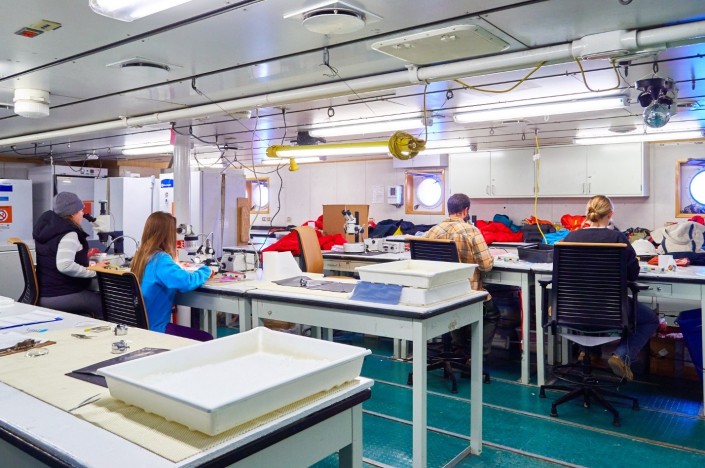
Thanks to the winter krill cruise, I have developed a new appreciation for zooplankton. Zooplankton are very important components of the food web. They are a key connection between primary producers (phytoplankton and other algae) and upper level predators, like penguins and seals. Until you see them in person, you can’t really appreciate how gorgeous and fantastically diverse zooplankton are. I love finding “new to me” species.



This is the fifth and final year of the winter krill survey. I am quite sad to see it end. Most scientists go to Antarctica during the Antarctic summer, when the weather is generally gentler. The winter krill cruise has certainly had it challenges (last year we had an ice hurricane that prevented us from working for several days), but is has provided a unique perspective on krill ecology.
I will be blogging from the field for the duration of the winter krill cruise (most of the month of August). You can read about my adventures in Antarctic research here (http://adrian.fritztech.com). If you are particularly excited to read about my time in Antarctica, you can flip through my website and read the blogs from my previous trips south.




